

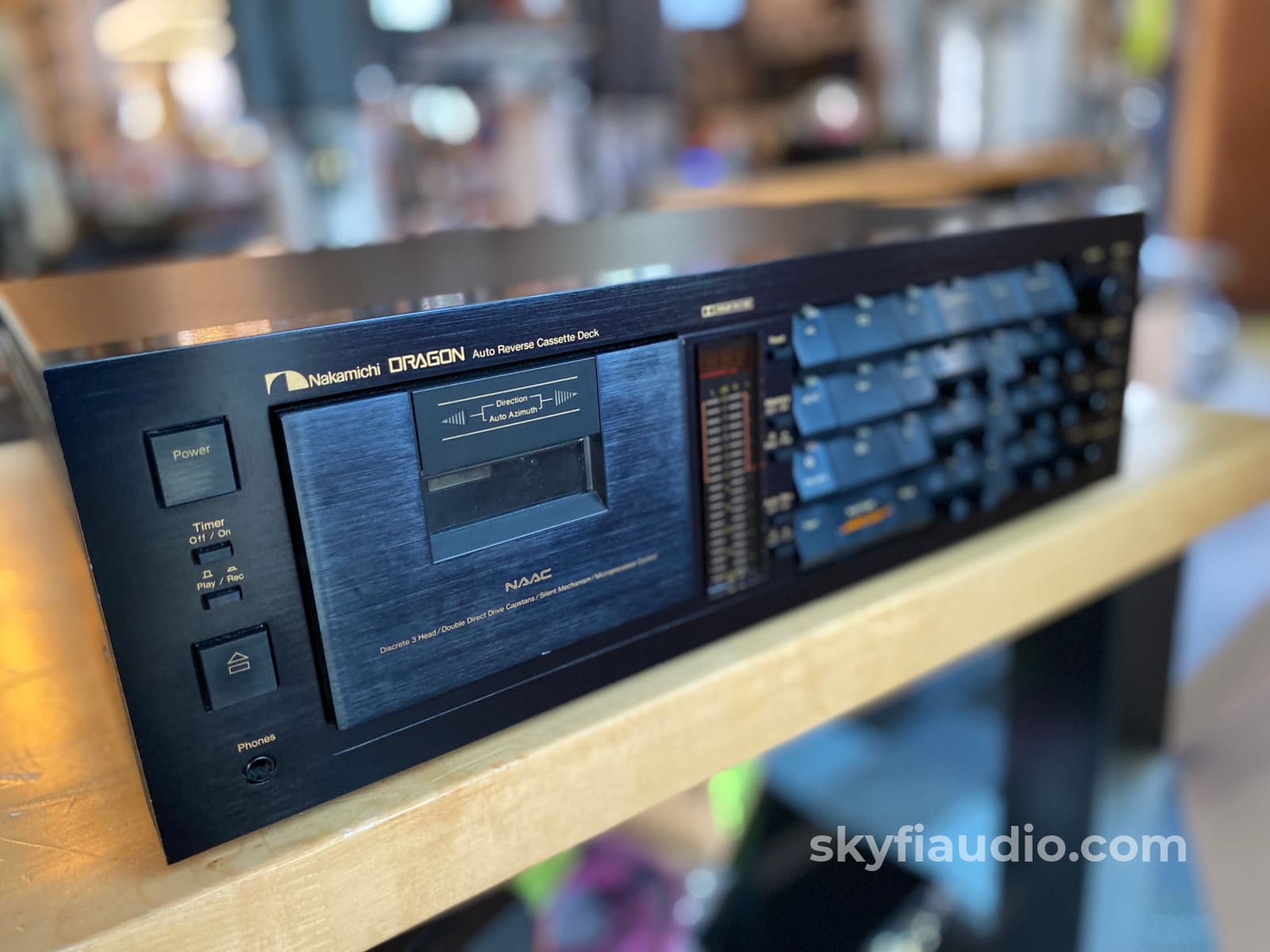
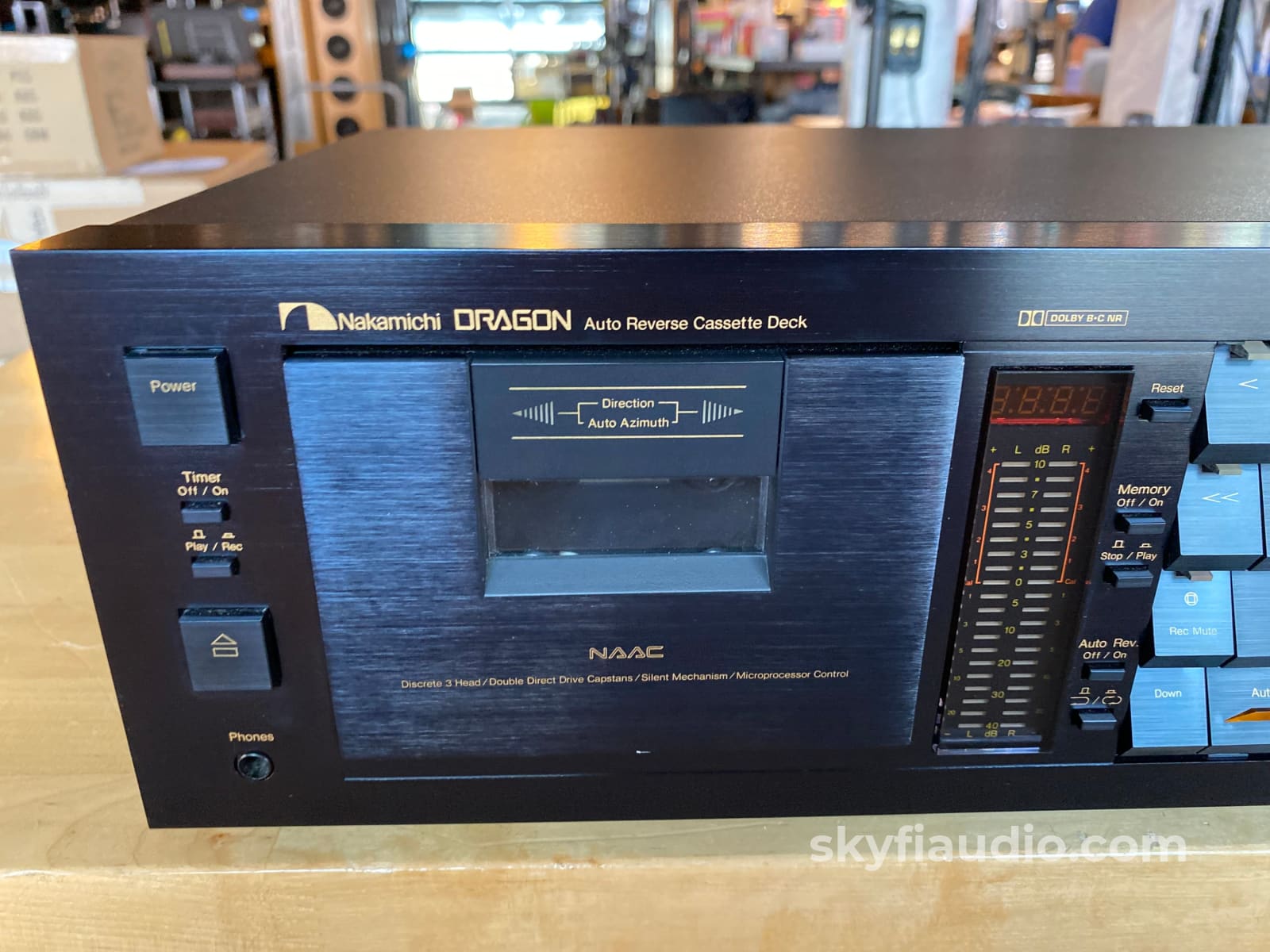
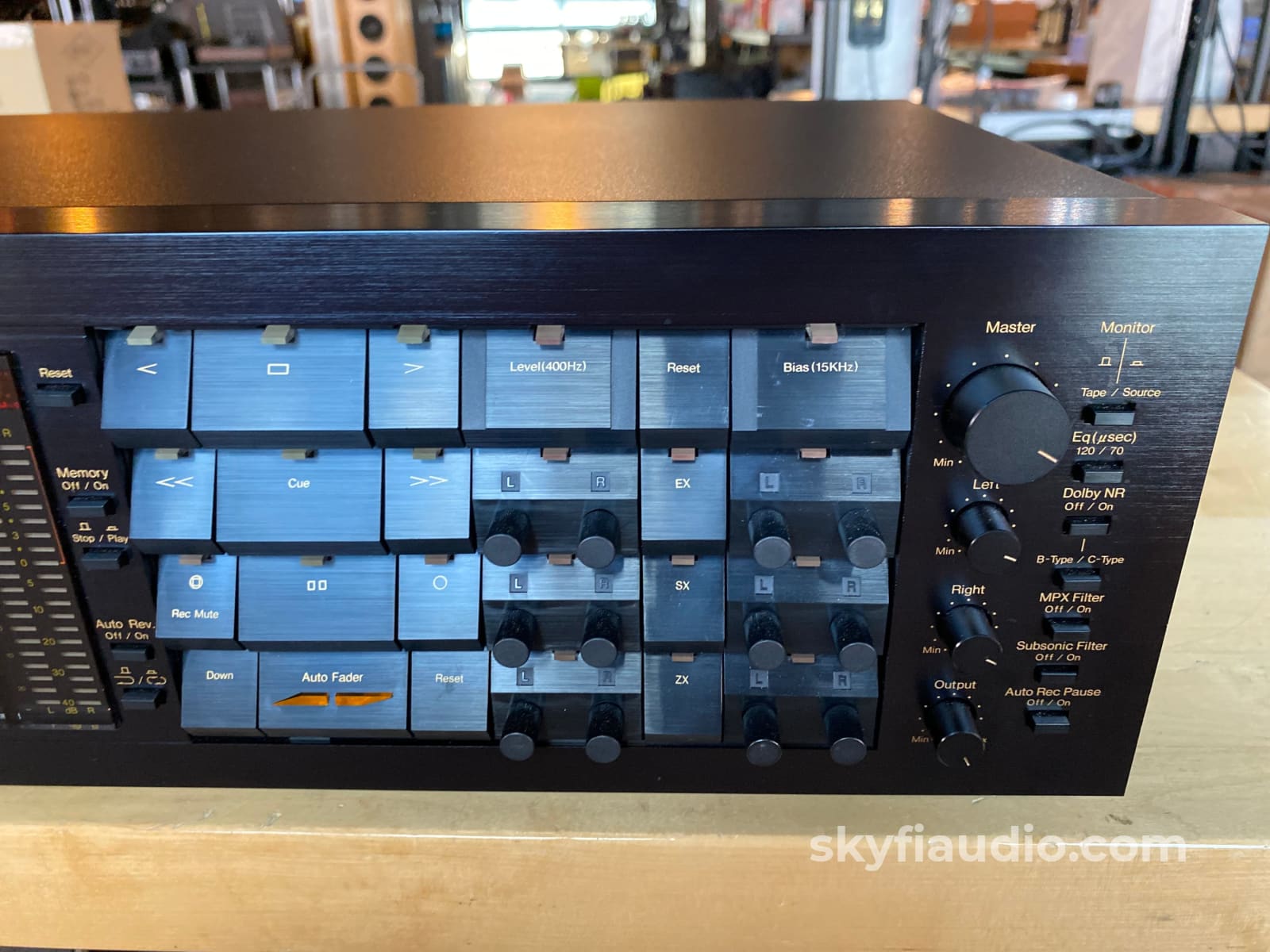
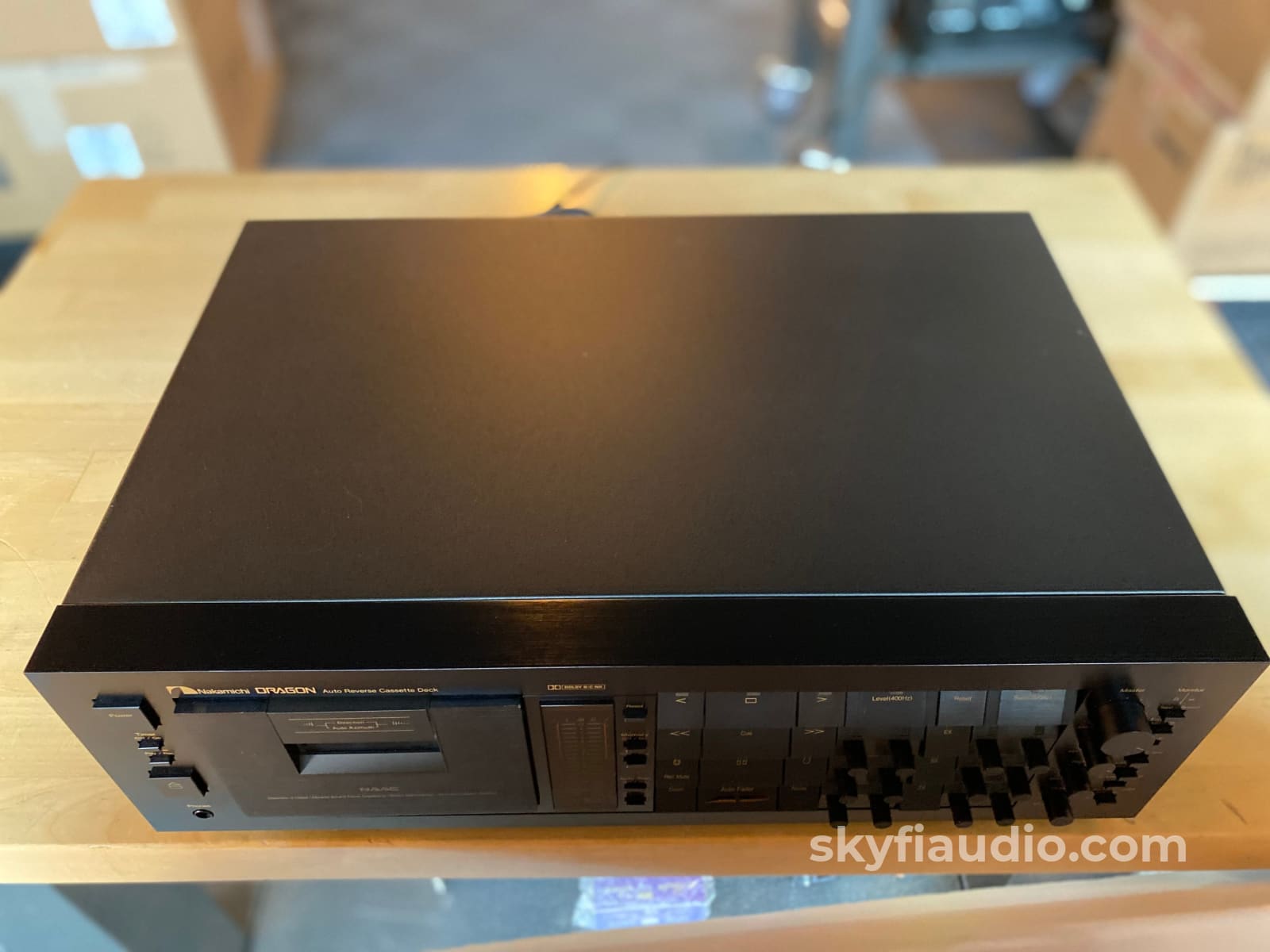

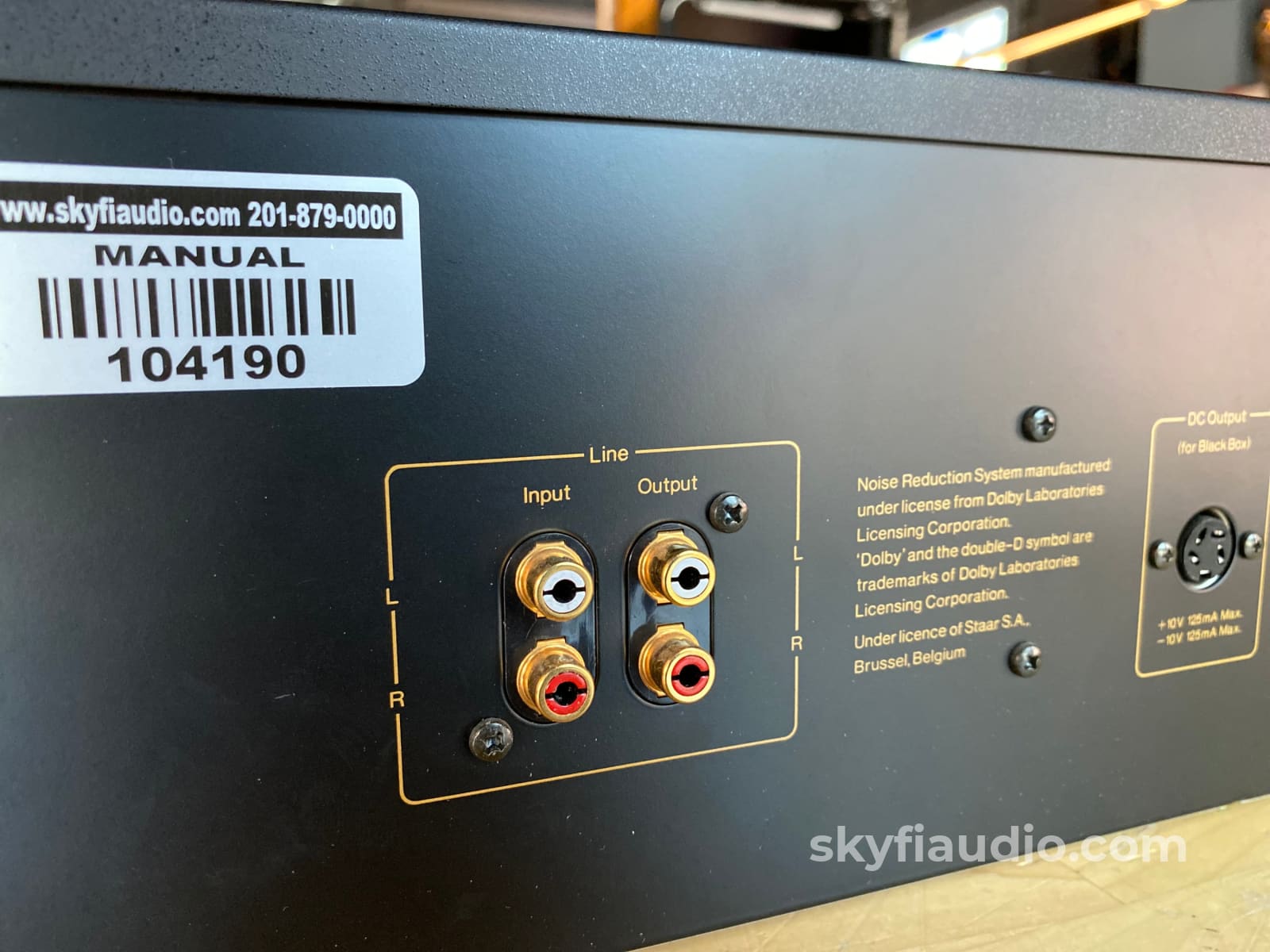
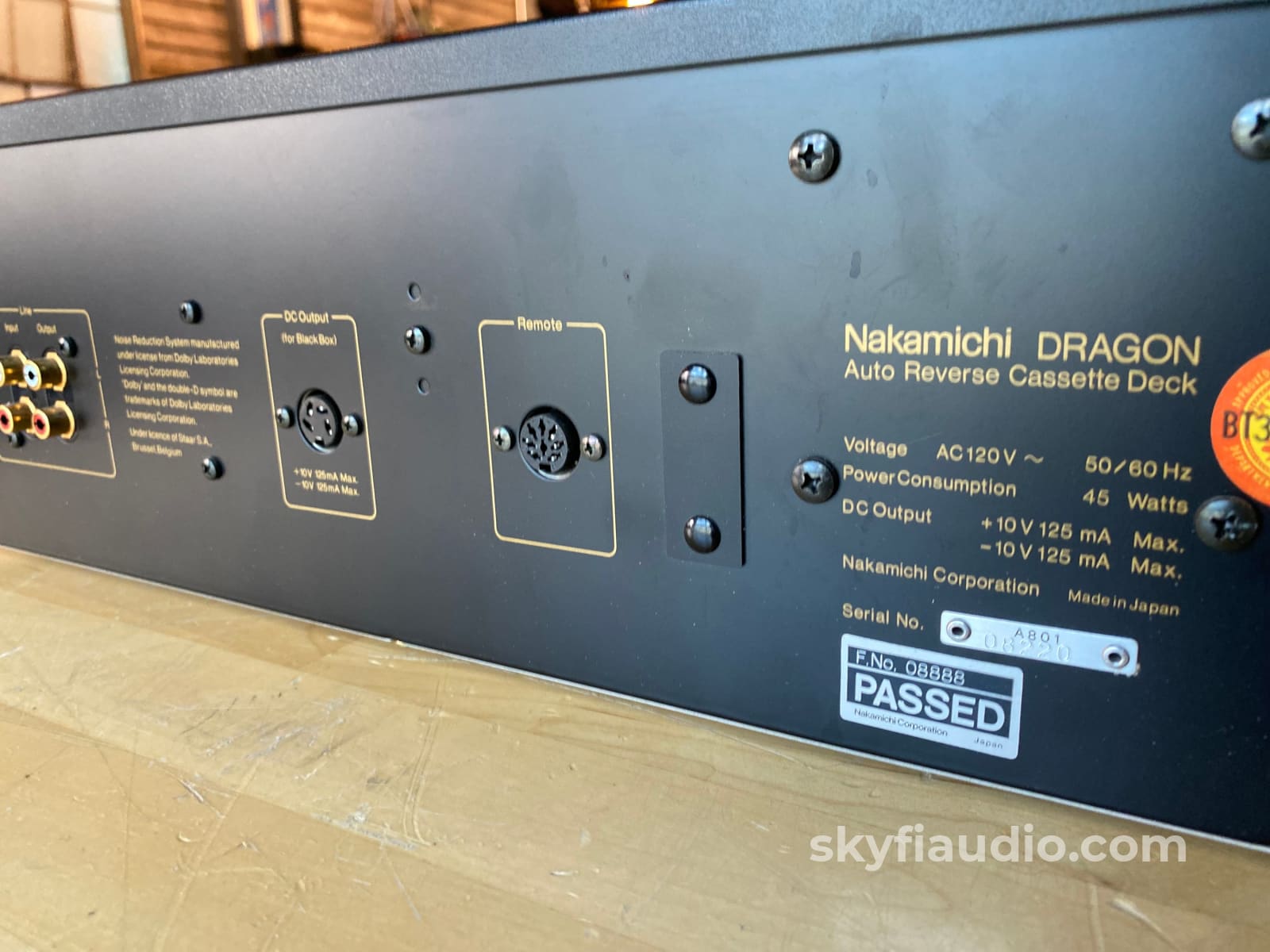
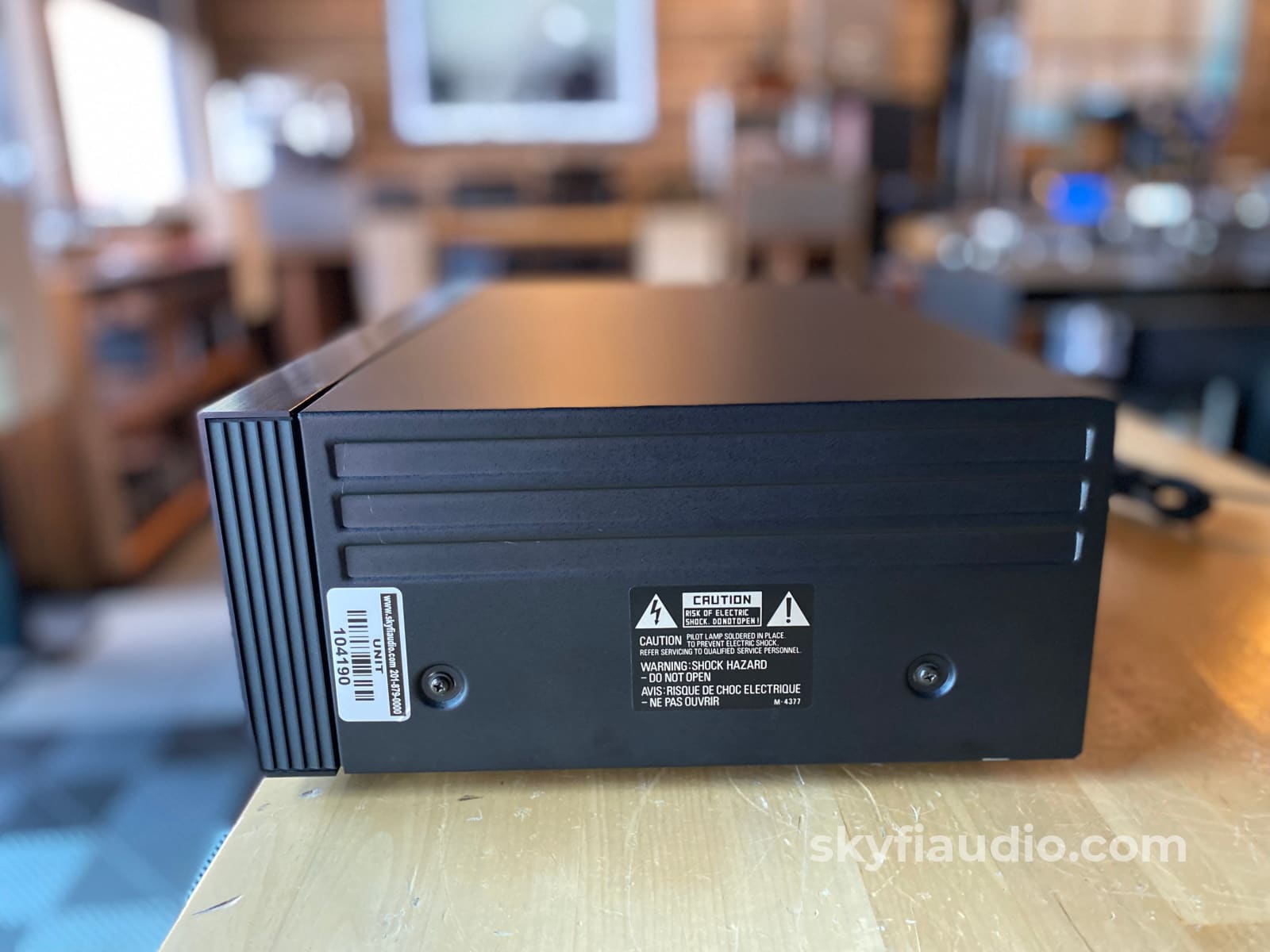
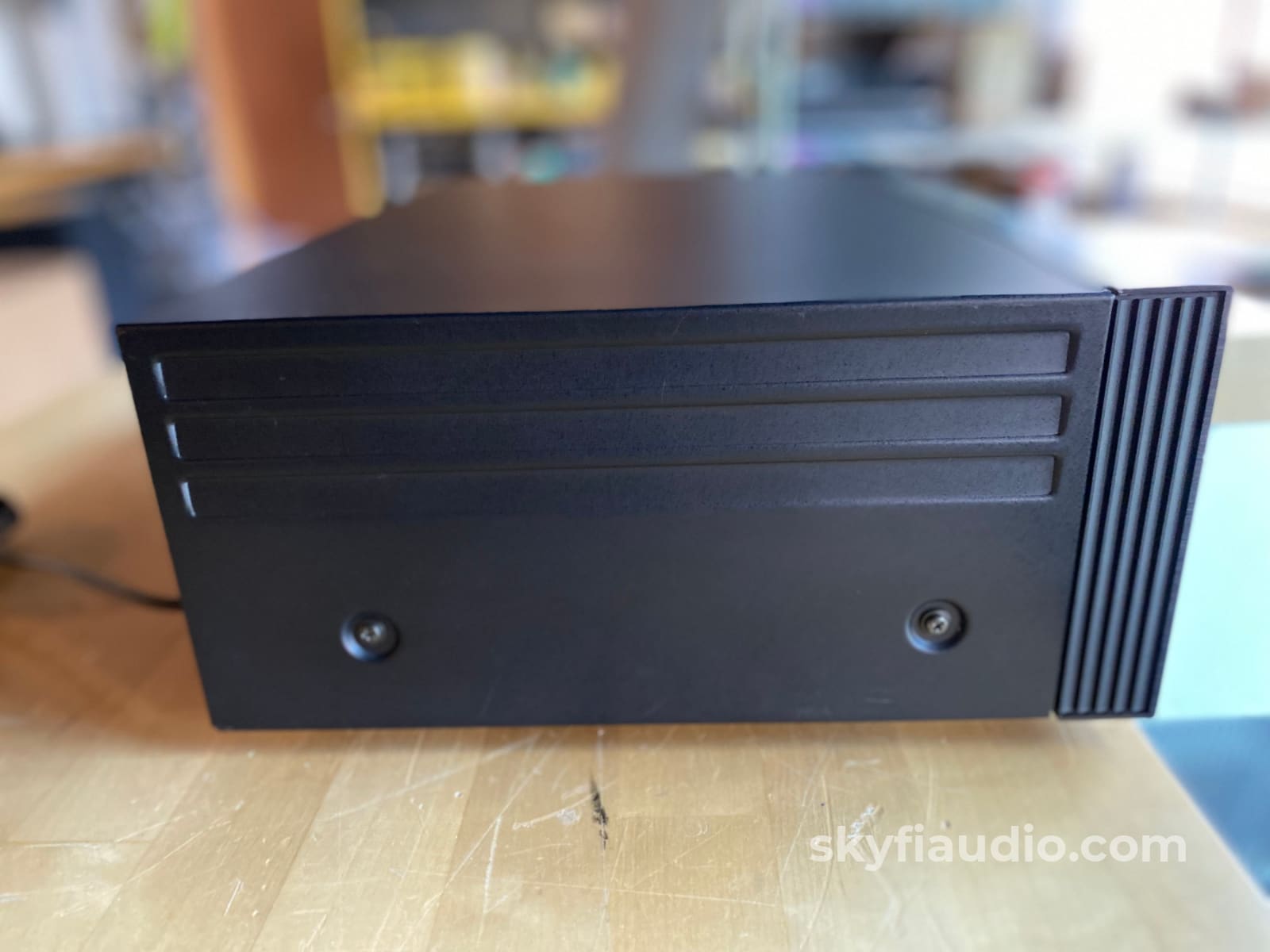
Nakamichi DRAGON Tape Deck, Minty And Serviced
Free Shipping on Most Electronics - Excludes Speakers and Items Requiring Freight - Contiguous U.S. Only
Pickup currently unavailable at SkyFi 479

Nakamichi DRAGON Tape Deck, Minty And Serviced
SkyFi 479
479 South Broad Street
Glen Rock NJ 07452
United States
General:
Working Dragons are becoming more and more difficult to find.
While legendary for the performance, they age over time and will eventually need service.
Servicing a tape deck of this complexity is particularly difficult, truly a labor of love. Just getting the mechanism out is a long endeavor! We're lucky to have a stash of some original Nakamichi spare parts, enough to do a handful of decks over the past year.
This particular unit received just that - a full service and test. We replaced all the consumable components in need. The unit was cleaned, lubricated, demagnetized, calibrated, and fully tested for performance.
Condition is very good with very slight signs of use.
The Nakamichi Dragon is a auto-reverse stereo cassette deck with double Dolby B and C noise reduction, it was first sold by Nakamichi in 1982 with a recommended retail price of USD $2,499 and discontinued 11 years later in 1993.
The main features of the Nakamichi Dragon are: 3 discrete heads and off-tape monitoring, digital tape counter with 4 digits and memory stop, manual tape type selection and capable of handling normal, chrome and metal tapes with additional manual equalization selection, double direct drive dual-capstan transport.
Typical front loading cassette deck with the cassette compartiment located on the left side of the deck. Tape eject is operated mechanically and the cassette needs to be placed with the side to be played facing forward in the cassette well.
Level meters used on the Dragon are digital LED peak reading meters. Full-logic transport controls used on the Dragon let it respond to the slightest finger contact for fast and effortless transport function selection. Cue and review can be used to easily and quickly locate the beginning of a passage at two speeds.
Automatic playback azimuth correction adjusts automatically the azimuth of the Dragons playback head to the azimuth the tape was recorded with so playback on the {0} is possible with the best sound quality. To ensure the best response from the wide variety of tapes available adjustment of, bias and sensitivity, to optimum levels can be performed prior to recording.
Dolby C-type used in the Dragon provides 20 dB of noise reduction above about 1,000 Hz, fully doubling the amount given by B-type. The three-head configuration of the Dragon requires a Double Dolby system, one for recording and one for playback. A Subsonic filter is provided in the Dragon to prevent infrasonic signals generated when playing a warped record. These signals can upset the Dolby system and prevening it from functioning properly. The 19kHz multiplex pilot slgnal present in FM stereo broadcasts can cause false triggering of the noise reduction system. The switchable MPX filter of the Dragon filters out the pilot signal, and assuring proper Dolby processing of FM stereo programs.
For undisturbed listening a jack connector for a pair of stereo headphones is supplied. Connection to other audio components for plaback can be achieved by a RCA cable and recording from a source by a RCA cable. All main transport commands can be issued remotely with a wired remote control.
Brand Background:
Nakamichi was founded in 1948 by Mr. Etsuro Nakamichi, starting from a small research institute in Tokyo, Japan that provided R&D for major brands, government entities, universities and organizations.
Since then, it has established itself as a trusted creator of high-quality audio products, such as the Nakamichi 1000, the world's first 3-Head cassette deck.
Nakamichi's product lines are driven by an intense scientific curiosity, the passion for audio, and commitment to uncompromising quality and performance.
Ownership:
Single Owner
Connections:
RCA Inputs and Outputs, Captive Power Cord
General Sound:
Accurate to the recording
Cosmetic Condition:
8/10 = Very Good. Excellent front faceplate, one minor flaw on chassis side or top.. See our detailed rating description here.
Working Condition:
Working perfectly and tested in our lab.
Included:
Just the unit and power cord.
Packing:
Will be packed using our highly developed in-house process and custom packing materials.Reviews:
Click Here
Weight:
20 lbs.
Approximate Age:
1980
Link to Manual:
Click Here
Recommended Cables:
Kimber Kable - RCA Interconnects - Better
Kimber Kable - RCA Interconnects - Best
Testing Process:
First steps are performed to determine if the unit is a candidate for our full restoration process or if its just in need of a light service.
We first do a basic functionality test to ensure proper playback fast forward and rewind. We look for smooth operation of the motors, transport engagement and associated rolling parts.
We then do an internal physical inspection to ensure the belts and rubber consumable parts are up to spec.
Internal components are checked to make sure that there are no signs of heat stress or damage particularly in the power supply section. Capacitors are checked for telltale signs of predictive failure including bulging, shrunken wrappers, or physical leakage. We also inspect the PCBs for discoloration from resistors or transistors that may have been running hot. On vintage units we often spot check select capacitors for value and ESR.
A light service will involve replacement of belts and rollers, external cleaning of heads, mechanism and boards and basic record and playback tests.
A full restoration will often include disassembly of the drive system and replacement of all consumable and wearable parts including pinch rollers, belts, brakes, bearings. We then clean lubricate and re-assembly the drive and perform basic mechanical alignment to ensure proper tape path and head alignment.
Final calibration will involved adjustment of playback erase and record heads and optimization of the bias for a specific tape type. We do this with the aid of a Soundtech 1510A tape deck analyzer and a Nakamichi T100 unit and reference calibration tapes.
Final listening tests are done while monitoring with our reference Grado HP1 headphones and a variety of factory and custom reference recordings. We find that there is no better system for critical listening on tapes than the headphones specially when comparing a live feed to a recorded feed.
Choose options











